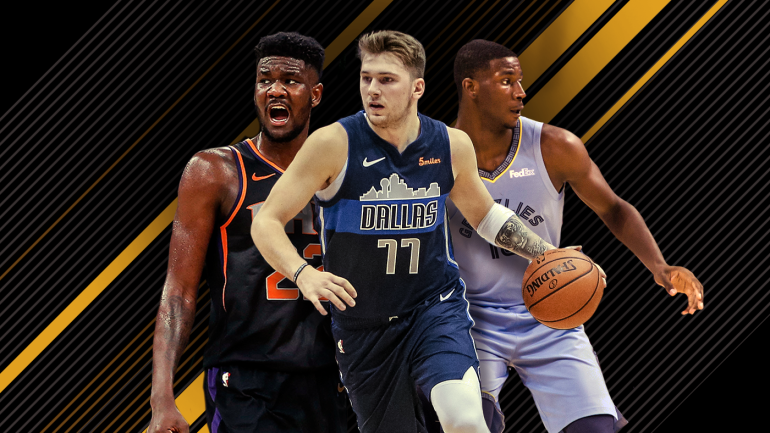
Copyright © 2018 | Sports
| 1 | |
|
Season stats: 19.0 points, 6.7 rebounds, 5.1 assists, 1.1 steals Doncic came into the NBA with an incredible amount of hype as perhaps the best international basketball prospect ever, but he also came with some questions — perhaps why he dropped to the No. 3 pick in the draft. The biggest question was whether his advanced skill set would be compromised by his lack of elite NBA-level athleticism — so far, needless to say, it has not been. Doncic is a wizard with the ball, has shot much better than expected from the 3-point line and has been a strong rebounder. But the things that jumps out about Doncic is his maturity, as evidenced by the words that come out of established NBA players’ mouths when they talk about him: “That dude gonna be a problem. He already a problem,” Draymond Green said sternly after narrowly beating the Mavs, just for one example. Doncic came into the league confident, given his overseas accomplishments, and the magic has gotten to the point where you almost expect miracle shots like this to go in. It’s been an amazing 2018 for Doncic, and if he can stay healthy, he’ll add a Rookie of the Year trophy to his mantle next summer. |
|
| 2 | |
|
Season stats: 16.3 points, 10.9 rebounds, 2.3 assists, 1.0 blocks Outside of a slight lull in the beginning of December, Ayton has been incredibly consistent for a Suns team that started off horrendous and has since moved into the realm of just pretty bad. The No. 1 pick has been a stabilizing force in the middle for the Suns offensively, shooting 60 percent from the field and 77 percent from the free throw line while averaging a double-double. The big man had noted defensive problems coming out of Arizona, and he’s still working through them, but the effort seems to be there. He’s collected three blocked shots in a game six times this season, which at least shows that he’s capable of being a rim protector when he’s engaged. Were it not for Doncic’s overall game and signature moments, Ayton would be the front-runner for Rookie of the Year. |
|
| 3 | |
|
Season stats: 13.1 points, 4.7 rebounds, 1.8 blocks, 0.9 steals As the second youngest player in the NBA (he turned 19 on Sept. 15), Jackson has already exceeded the expectations for his rookie season. Given his tools and skill set, most projected Jackson as a potential future All-Star, but he’s already become a valuable rotation piece and impact player for a veteran Grizzlies team. He’s been rock-solid defensively, leading all rookies in blocked shots, and while his offense has been inconsistent (he’s run into a lot of foul trouble), he’s shown glimpses of being a very special two-way player. One of those moments came against the best player in the NBA, as Jackson hit a ridiculous step-back 3-pointer right in LeBron James‘ face to bury the Lakers in Los Angeles. Jackson’s rebounding could improve, and likely will, but he’s already a tenacious defender who has shown an ability to make the NBA 3 consistently (34 percent), and he’s been doing it for a playoff contender. |
|
| 4 | |
|
Season stats: 15.5 points, 7.2 assists, 2.8 rebounds In a long line of rookie point guards before him, Young is having a rocky rookie season, shooting 38 percent from the field, 25 percent on 3-pointers and leading all rookies in turnovers (3.9 per game). That being said, it’s worth noting that he’s shouldering the largest load among rookies (usage rate of 26.6) for one of the worst teams in the NBA. While his shooting is a concern, one thing that’s stood out early in Young’s career is his vision and passing ability. To average 7.2 assists with the crop of players he’s surrounded by is a minor miracle, so it bodes well for Young potentially leading the league in the category one day if the Hawks can surround him with quality players over the next several years. Young’s calling card coming out of college was his ability to shoot deep 3-pointers off the dribble, an area where he’s been dismal this season, and his ability to improve that skill could be the difference between a solid NBA career and a potential All-Star mainstay. |
|
| 5 | |
|
Season stats: 10.6 points, 3.0 rebounds, 2.9 assists, 1.0 steals The numbers may not pop off the page, but Gilgeous-Alexander certainly passes the eye test when you watch him play. He possesses poise and maturity well beyond his years, which allowed him to crack the starting lineup and earn significant playing time in a crowded Clippers backcourt. He’s been deadly in pick-and-roll situations, hitting his silky smooth pull-up mid-range jumper or using his length to finish at the rim, and he’s shooting 49 percent from the field, 37 percent from 3 and 80 percent from the line. Not bad for a 20-year-old thrown into the mix on a team surprisingly vying for a top Western Conference playoff seed. |
|
| 6 | |
|
Season stats: 12.7 points, 6.1 rebounds, 1.0 blocks Bagley was sidelined with back and knee injuries just as he was starting to put together a strong stretch of games, so we’ll have to see if he can re-establish himself once he returns to the lineup. Before the injuries, Bagley had become a productive member of the upstart Kings‘ second unit, one of the best in the NBA. He’s already put up four double-doubles off the bench, including a massive 20-point, 17-rebound night in his first career game at Oracle Arena against the Warriors. Bagley can play either the four or the five, and while he hasn’t taken very many 3-pointers (26 total), he’s made a respectable 35 percent. He may constantly be compared to Doncic, whom the Kings passed over to select him, but it looks like Bagley will be an impact player for the Kings as they look to continue their ascent back into NBA relevancy. |
|
| 7 | |
|
Season stats: 10.3 points, 6.7 rebounds, 1.9 assists, 1.5 blocks Carter started off the season strong, but the return of Lauri Markkanen seems to have thrown a bit of a wrench into his development. On paper the two big men provide an exciting inside-outside one-two punch, but Carter’s numbers have dwindled since Markkanen’s return. Carter had a stretch where he scored double-digit points in 12 of 15 games, but has reached the 10-point mark in just two of his last 10, while seeing a decline in minutes. Perhaps a result of Markkanen’s return, Carter has only attempted two 3-pionters in his last 12 games after averaging one attempt per game in the first 23 games of his career. Carter seems like a low-maintenance player, someone who will rebound and block shots even if he’s struggling offensively, so he’ll likely make the adjustment and figure out his offensive role with the Bulls moving forward. |
|
| 8 | |
|
Season stats: 14.9 points, 3.1 rebounds, 2.6 assists Sexton has hit some speed bumps so far in his rookie season, with former head coach Tyronn Lue being fired just six games into the season and veteran leaders George Hill and Kyle Korver traded away after that. Since joining the starting lineup as the full-board youth movement took precedent in Cleveland, Sexton’s usage rate has jumped from 22.8 minutes to 26.4 — resulting in some big nights, and some catastrophic nights for the 19-year-old. He’s shot the 3-pointer well (37 percent), and the Cavs would love to see him take more of them instead of settling for long 2s, but Sexton’s biggest issue thus far has been an inability to facilitate. According to Basketball Reference, no point guard has ever finished a season with a usage rate over 25 and fewer than 3.0 assists per game while playing 29 or more minutes per game. It’s a convoluted stat to say, Sexton should be getting more assists given how much he controls the basketball. It’s an area he’ll need to improve if he’s going to be the Cavs’ point guard of the future. |
|
| 9 | |
|
Season stats: 11.1 points, 3.1 rebounds, 1.8 assists The Knicks struck gold with the undrafted rookie, and Trier was rewarded when the team converted his two-way contract to a two-year, $7 million deal. The 22-year-old quickly established himself as a fearless bucket-getter off the bench, and has provided some much-needed explosiveness for New York’s bottom-10 offense this season. Trier has had some difficult shooting nights so far in his career, but his overall efficiency is good (47 percent from the field, 38 percent from 3) and he’s passed the 20-point mark off the bench four times already. Don’t expect Trier to become an assist master or a defensive stopper anytime soon, but he’s been solid in the bench scorer role in which the Knicks have placed him. |
|
| 10 | |
|
Season stats: 12.0 points, 4.2 rebounds, 0.9 assists Knox would probably be higher on this list had he not missed seven games early in the season with an ankle injury. It took him a while to get back to full strength, but he’s started to come into his own recently, scoring 20 or more points five times in his last eight games, including a 26-point, 15-rebound performance in a loss to the Hornets. Knox is clearly the Knicks’ top offensive option, supplanting Tim Hardaway Jr., but he’s got a long way to go when it comes to facilitating, as evidenced by his 0.9 assists per game. Knox has been starting off games hot recently, and coach David Fizdale said that Knox needs to work on his conditioning and making adjustments to sustain that throughout the game.
|
|


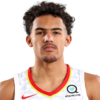

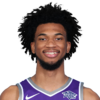


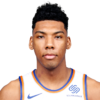
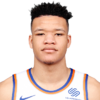
Be the first to comment